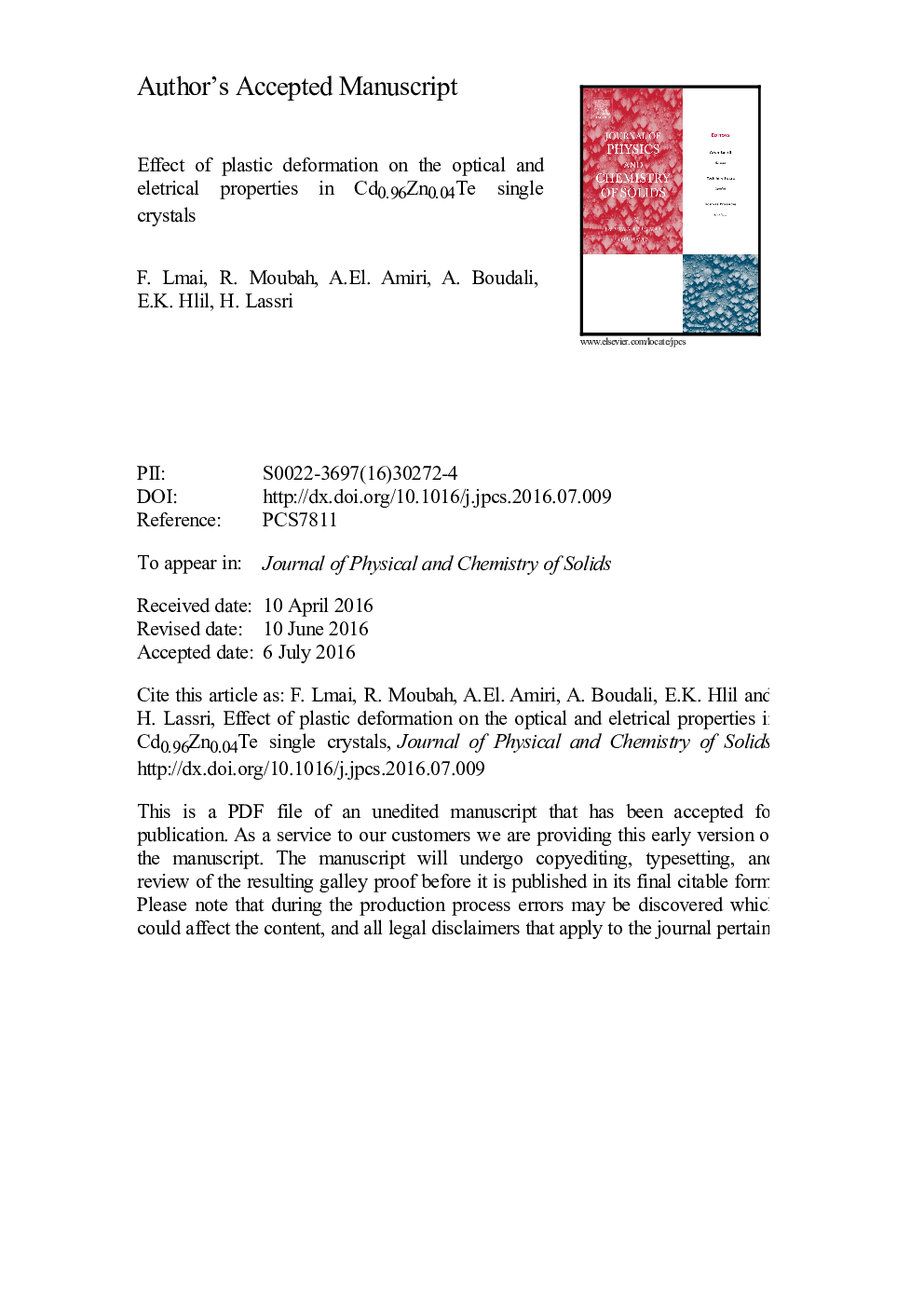| Article ID | Journal | Published Year | Pages | File Type |
|---|---|---|---|---|
| 5447530 | Journal of Physics and Chemistry of Solids | 2017 | 10 Pages |
Abstract
Using UV-visible, photoluminescence, electrical measurements and ab-initio calculations, we study the effect of introduced dislocations on the optical and electrical properties in Cd0.96Zn0.04Te crystals. To generate dislocations, a plastic deformation on the Cd(111) and Te(1¯1¯1¯) faces was induced. It is shown that the plastic deformation results in: i) a decrease in Zn concentration in the deformed regions, which is higher on the Cd face, ii) decrease in the band gap energy, iii) an increase of acceptor concentration, and iv) the leakage current is higher on the Te face. Calculation of barrier height has led to identify the dominant defect, which is the complex Cd vacancies, acceptor center [VCd, ACd] on the Cd face and VTe on the Te side, respectively. Electronic structure calculations based on full potential linearized augmented plane waves (FPLAPW) method were performed as well and have shown that the optical band gap energy decrease upon deformation can be understood by the decrease in Zn content in the deformed regions.
Related Topics
Physical Sciences and Engineering
Materials Science
Electronic, Optical and Magnetic Materials
Authors
F. Lmai, R. Moubah, A.El. Amiri, A. Boudali, E.K. Hlil, H. Lassri,
